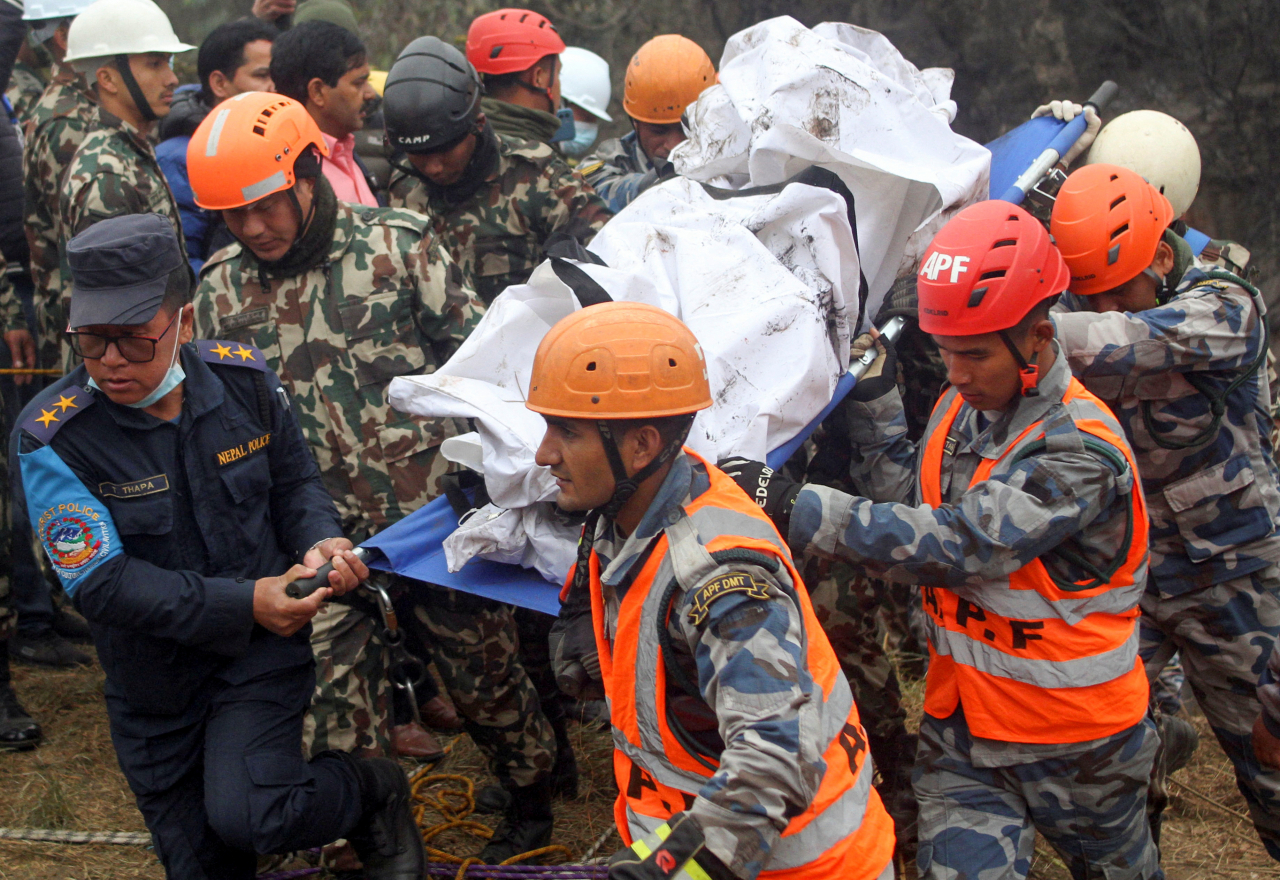 |
A rescue team recovers the body of a victim from the site of the plane crash of a Yeti Airlines-operated plane in Pokhara, Nepal on Jan. 16. (Reuters-Yonhap) |
Nepalese authorities on Monday resumed searching for a South Korean, one of four people who remained missing from a plane that crashed into a gorge on Sunday while making a 27-minute flight to a Nepalese tourist town northwest of the capital Kathmandu.
The Himalayan country’s deadliest plane crash since 1992 left at least 68 of the 72 people aboard dead, including another Korean -- the father of the missing teenage Korean who was a noncommissioned Army officer, according to local reports.
Seoul’s Foreign Ministry declined to publicly reveal their identities, citing protocol. A senior official there said efforts were being made to provide support to the victims’ family. The ministry had sent its staff to the scene the day the crash took place.
Chairing an interagency meeting Monday morning, Second Vice Foreign Minister Lee Do-hoon reiterated that the government would work closely on the matter with Nepalese authorities while providing any and all help for the victims’ family. Korea’s ambassador to Nepal is already pulling out all the stops to make that happen, according to the ministry.
Sunday’s tragedy also included a Nepalese who had dedicated his life to teaching Korean to the Nepalese people. According to the Korean group promoting Won Buddhism, the Korean adaption of the religion, one of its Nepalese monks who had taught the language for the last 14 years died in the crash, along with his teenage daughter.
Meanwhile, Monday’s search retrieved the black boxes, the cockpit voice recorder and flight data recorder. They were in “good condition,” rescuers said, raising hopes for a speedy investigation into what caused the twin-engine ATR 72 aircraft -- flying from Kathmandu to Pokhara, gateway to the scenic Annapurna mountain range -- to crash in clear weather.
Human error is cited as one of potential causes, as pilots find it harder to land in Nepal, given the mountainous terrain and sudden weather changes. The country, home to Mount Everest and several other of the tallest mountains in the world, has a history of deadly plane crashes, with the combined death toll since 2000 coming close to 350 people who died from either plane or helicopter crashes.
Since 2013, the European Union has banned Nepalese airlines from entering into its airspace, citing safety concerns. The 27-nation bloc still demands the country do more to improve its safety standards, even after the International Civil Aviation Organization in 2017 noted the improvements Nepal had made.






![[Today’s K-pop] Blackpink’s Jennie, Lisa invited to Coachella as solo acts](http://res.heraldm.com/phpwas/restmb_idxmake.php?idx=644&simg=/content/image/2024/11/21/20241121050099_0.jpg)
